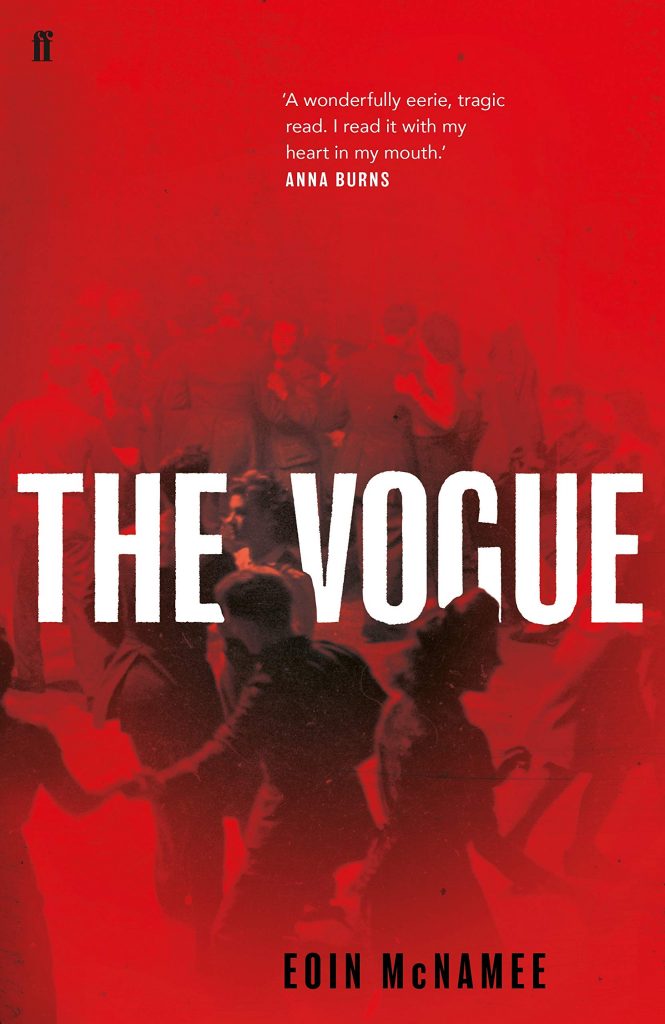
“Airbases in Co Down have always fascinated me… During the war, pilots had been billeted in the house where I was brought up in in Kilkeel. Pilots had written their names on the rafters upstairs and there was a yellowed pin-up of Betty Grable on the attic door. The ghosts of airmen have always been with me.” (Eoin McNamee on The Vogue)
Anyone wishing to know more about the plot of Eoin McNamee’s The Vogue, and its connections to the Greencastle air base in County Down should read the interview in the Irish Times linked above, which offers excellent and valuable insights into McNamee’s writing life and process. I was particularly interested to discover that he does not think of The Vogue at all as a crime novel. I get his reasoning – The Vogue’s emphasis is not on crimes committed so much as the years and layers of history that conspire to obfuscate them, the collective acts of remembering that will eventually bring them to the surface – but thinking about the novel in terms of its relationship to crime fiction does reveal other aspects, most notably the form the novel takes, its complex web of clues, its fractured skeleton.
The Vogue is a brilliant crime novel. It is a brilliant, achingly evocative piece of writing full stop. While reading it I felt rage and tension and sorrow and above all endless admiration for the writer. To experience The Vogue is to experience giddy exhilaration at the risks taken, the tightrope-walk balance McNamee demonstrates in knowing when to keep us guessing, when to show his working, when to reveal the maggots at the heart of the apple.
Oh, the joy of reading a novel that doesn’t give much of a toss about ‘accessibility’. For the first fifty pages I wasn’t ever entirely sure of what was going on and I loved it. Thank f**k for publishers and editors who are still prepared to run with that, to not harp on about reader expectations, to understand that what they have is a fantastic novel, a marvellous writer, to put their money where their mouths are. I was talking to someone the other day about how important music has always been to me, how my love for music has from a young age influenced the way I read, the way I look for meaning in texts – first find the rhythm, the tone, the way the language resonates, through a novel’s structure come to understand its melody – and the first thing any reader should notice about The Vogue is its music, which had me catching my breath with excitement – excitement that writers are doing this – on every page:
Upritchard dreamed of the girl in the pit. His surroundings mocked him. The posters in dirty frames, men and women frozen in mid-season gaiety. He lagged pipes with old jumpers and pushed teatowels into the gaps between frame and window. Rime frosted the inside of the single windowpanes, starred and crystalline and aglitter when he turned his torch on them so that they seemed their own nebulae, something cold and far away. He sat alone by a paraffin stove in the kitchen. There was a leather suitcase on the table in front of him, the lid covered in yellowed travel labels for Skegness and Brighton, the sea on shingle beaches, lights strung out along Victorian esplanades, pierside amusements. Long-gone summers.
The Vogue seems to me a quintessentially Gordon Burn-type book, the kind of novel the Gordon Burn Prize was set up to champion and celebrate. This has been my first encounter with Eoin McNamee’s writing, an experience that has ensured I will be working my way through his backlist as a matter of priority.